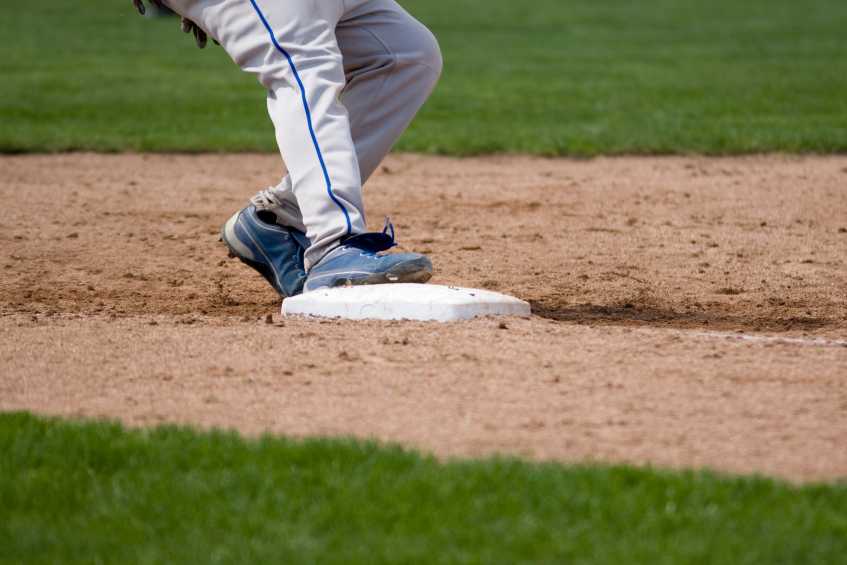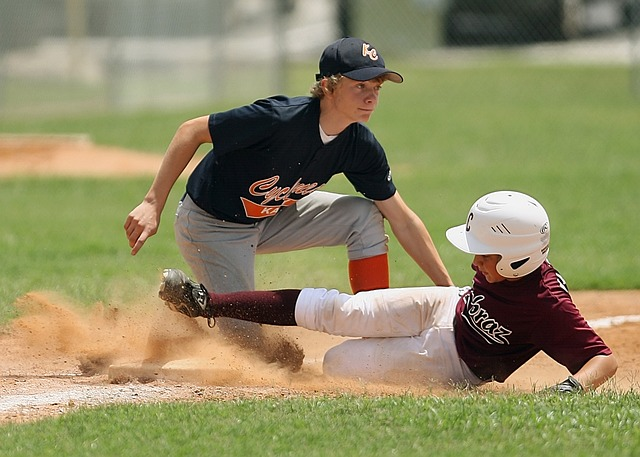
Baseball is a sport that is loved by millions of people around the world, but even the most dedicated fans may not know about all the rules and nuances of the game. One such subtlety is the neighborhood play. The neighborhood play is a crucial aspect of baseball that often goes unnoticed by many spectators, but it plays a significant role in the game's outcomes. In this blog post, we will explore what the neighborhood play is, its impact on the game, and the controversies surrounding it.
The neighborhood play is a term used in baseball to refer to a defensive maneuver that is often employed by the infielders to turn a double play. In essence, it is a technique that allows the fielder to touch second base or force out the runner at second base without actually touching the bag with their foot. Instead, the fielder will hover their foot over the base and catch the ball before quickly moving their foot away to avoid contact with the sliding baserunner. This maneuver is called the neighborhood play because the fielder is considered to be in the "neighborhood" of the base, and the umpire usually grants them the out, even if the fielder didn't actually touch the base.
While the neighborhood play is a commonly used technique in baseball, it has been the subject of much controversy. Critics argue that the play goes against the spirit of the game and undermines the integrity of the sport. They contend that allowing the fielder to not touch the base while still getting the out is akin to cheating and gives an unfair advantage to the defensive team. However, proponents of the neighborhood play argue that it is a necessary safety measure that helps to protect the infielders from potential collisions with the sliding baserunner. Furthermore, they argue that the play is a part of the game's history and tradition and should be upheld as such.

The neighborhood play is a term used in baseball to describe the practice of an infielder catching a ball and then stepping on the base to force out a runner, even if the infielder never actually touches the base with their foot. This is often done to avoid a collision with a baserunner who is sliding into the base, and is sometimes referred to as a "phantom tag." The neighborhood play is often used on double play attempts, where the second baseman or shortstop will catch a throw from the first baseman, touch second base with their foot, and then throw to first base to complete the 6-4-3 double play.
While the neighborhood play is not an official rule in baseball, it has been a longstanding practice in the game. It is generally understood by umpires that infielders are allowed a certain amount of leeway when it comes to touching the base on double play attempts, as long as they are in the "neighborhood" of the base. However, what constitutes the "neighborhood" is not clearly defined and can vary depending on the situation and the umpire's judgment.
The history of the neighborhood play is somewhat murky, but it is believed to have originated in the early 20th century as a way to protect infielders from collisions with baserunners. The practice was not officially recognized by Major League Baseball until the 1970s, when the league introduced the infield fly rule. The infield fly rule states that if a fly ball is hit to the infield with runners on first and second base, and there are fewer than two outs, the umpire can declare the batter out even if the ball is not caught, in order to prevent the defense from intentionally dropping the ball and turning a double play. This rule made the neighborhood play less necessary, as infielders were no longer at risk of colliding with runners trying to advance on a pop-up in the infield.
More: What is the Infield Fly Rule?

The neighborhood play has a significant impact on the game of baseball, particularly for middle infielders. In baseball, middle infielders must react quickly to field the ball and make an accurate throw to first base to record the out. However, when a runner is barreling towards second base, there is a risk of a collision between the runner and the fielder, which can result in injury. The neighborhood play allows middle infielders to catch the ball, make the transfer to their throwing hand, and step on the base without having to worry about the runner sliding into them. This reduces the risk of injury and allows the middle infielder to make the play more quickly and efficiently.
In addition to player safety, the neighborhood play also has an impact on the pace of the game. Baseball games can be long and drawn out, with multiple innings and countless pitches. The neighborhood play allows the game to move more quickly and smoothly by allowing the middle infielder to make the play without having to wait for the runner to slide into the base. This reduces the amount of time it takes to complete each play and helps to keep the game moving along.
The neighborhood play has been the subject of numerous controversies throughout the years, with one of the main debates being its legality. The question at hand is whether the shortstop or second baseman should be required to touch second base with their foot in order for the out to be recorded. Many argue that the neighborhood play is an unwritten rule of baseball that allows middle infielders to protect themselves from hard-charging runners sliding into the bag, while others contend that the play is not consistent with the rules of the game.
The use of instant replay has added a new layer to the debate about the neighborhood play. While it was once up to the umpire's discretion to determine whether the middle infielder was close enough to second base to make the out, replay reviews have allowed for a closer examination of the play. However, instant replay has not necessarily settled the issue, as different umpires and replay officials may have varying interpretations of what constitutes a "neighborhood" play.
There has also been discussion about the potential impact of eliminating the neighborhood play altogether. Some argue that removing the play would increase the accuracy of umpire calls, while others believe that it would fundamentally change the nature of the game. Middle infielders may be less likely to attempt double plays or make risky plays if they are required to touch second base with their foot, potentially slowing down the pace of the game. Additionally, there is concern that eliminating the neighborhood play could put middle infielders in harm's way, as they may feel pressured to make a tag on sliding runners even if it means putting themselves at risk of injury.
In conclusion, the neighborhood play has been an integral part of baseball for over a century, providing an important rule for infielders to safely turn double plays while also keeping the pace of the game moving. While the play has faced some controversies and debates over the years, the majority of players and fans agree that it remains an essential part of the game.
It's important to remember that baseball is a sport with a rich history and traditions, and the neighborhood play is just one of the many rules that have evolved over time to shape the game we know and love today. As technology continues to advance and instant replay becomes more commonplace in the sport, it's possible that we may see changes to the way the neighborhood play is called in the future.
However, it's crucial that any potential changes to the neighborhood play take into account both the safety of the players and the overall integrity of the game. As fans and players, we should continue to embrace and appreciate the neighborhood play for its role in the sport and the excitement and strategy it brings to every game.
Chris Sloan is a former baseball league commissioner and travel baseball coach who has made significant contributions to the sport. In 2018, he founded selectbaseballteams.com, a website that helps parents find youth and travel baseball teams in their local areas. Since its launch, the website has experienced impressive growth, offering a wealth of resources including teams, news, tournaments, and organizations. Chris's unwavering passion for baseball and his innovative approach to connecting parents with quality baseball programs have earned him a respected reputation in the baseball community, solidifying his legacy as a leading figure in the world of youth and travel baseball.
There are 0 comments on "What is the neighborhood play in baseball?"
chandler allen says:
"Hi my name is chandler, i’ve enjoyed..."
On Wanting to tryout for summer ball. as an 18 year old
david graham says:
"With no current MLB team in Canada,..."
On With no current MLB team in
Charles Chavez says:
"To All Coaches: Do you have13U or..."
On Looking for Games